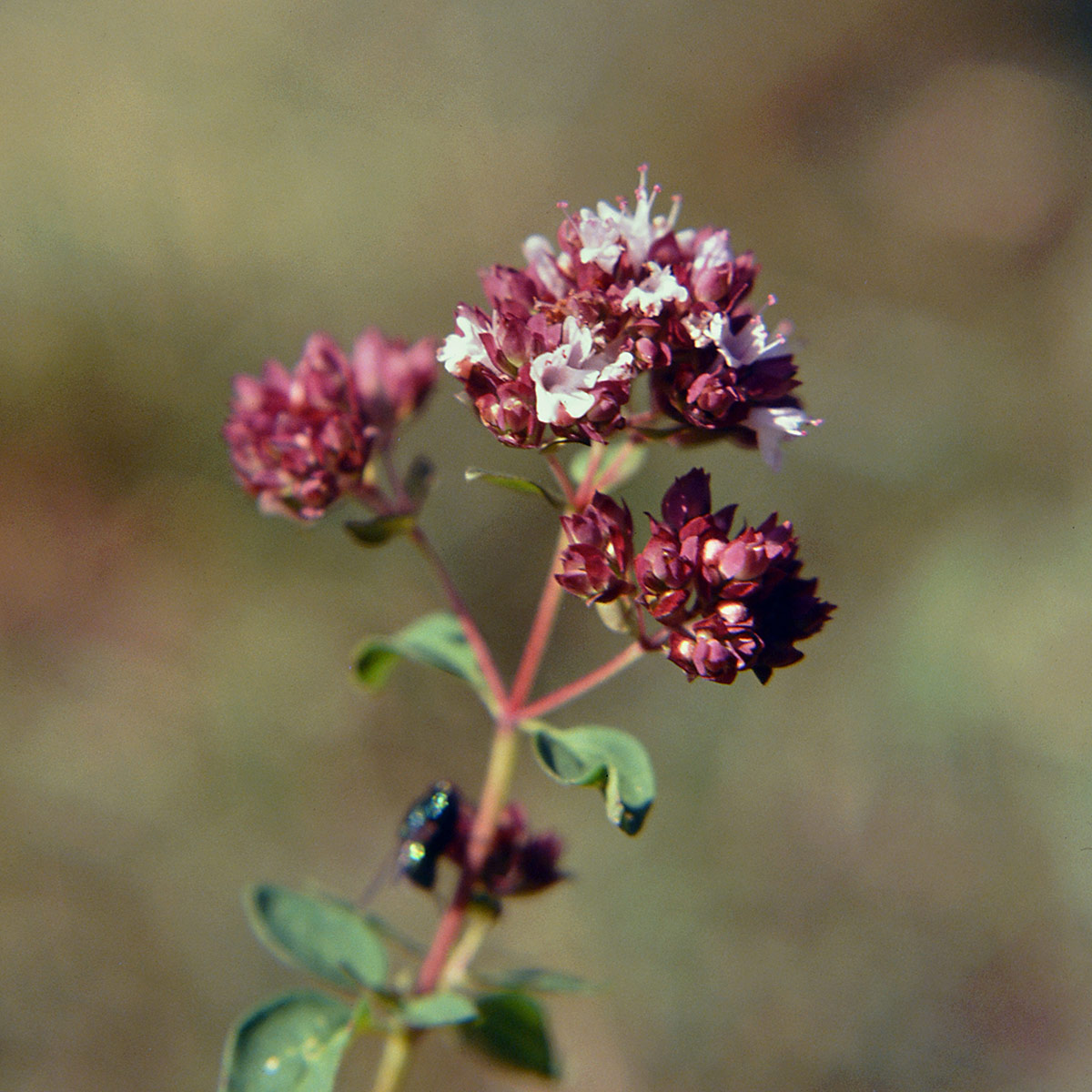Botanical name
Origanum vulgare ssp. hirtum (Link) Ietsw.
Family
Lamiaceae
Common name
Dost, Common dost, Greek oregano, Italian oregano
Information about the plant
Greek oregano is native to the Balkan Peninsula and Turkey. Today, it is widespread in Europe, from north to southern Scandinavia. In southern Europe, it is only absent in large parts of the Iberian Peninsula, Sardinia, and Crete. It grows in dry meadows, on forest edges, mountain slopes, and sparse pine and mixed oak forests. It is also cultivated in some Eastern European countries and in Spain. The dried leaves are a popular spice marketed under the name ‘oregano’.
The genus name Origanum is derived from the Greek ‘oras’ (= mountain) and ‘ganos’ (= jewelry, ornament), and can therefore be translated as ‘mountain ornament’. The species epithet vulgare is Latin and means ‘common’, while the subspecies hirtum means ‘bristly’, which is why the plant is also known as ‘bristly’ common dost in German.
Greek oregano grows up to 50 cm high and is branched at the upper part; the leaves are short-stalked, oval to lanceolate, and bluntly toothed with entire margins. They are dotted with glandular scales containing essential oil and emit an aromatic smell when rubbed. Numerous short-stalked, pink-colored labellum flowers are arranged in corymbose, almost spherical clusters. The flowering time is from July to October.
Medicinally used parts of plants (herbal drug)
The dried leaves and flowers, separated from the stems (Origani herba), with their spicy aroma from the essential oil contained in the drug, are used. This oil is found in the glandular scales on the surface of the leaves and is released when these glands are damaged by rubbing.
Constituents of the herbal drug
Origani herba contains essential oil, flavonoids, and phenolcarboxylic acids. The essential oil consists of 50 to 85% carvacrol, 1 to 5% thymol, 5 to 12% p-cymene, 5 to 12% γ-terpinene, and other monoterpenes (including borneol, linalool, 1,8 cineol, α-terpineol, α-pinene). Drugs of the ‘thymol type’, whose essential oil mainly contains thymol, are also widely used.
Quality of the drug
The quality of Origani herba is specified in the European Pharmacopoeia (Ph. Eur.).
According to the pharmacopoeia, the herb Origanum onites L. (French marjoram, Spanish hops), may also be used.
Medical applications
Recognised medical use
Origani herba has not been evaluated by the HMPC or the ESCOP.
Similar to thyme, Origani herba is used in folk medicine for respiratory complaints (coughs, bronchitis), as well as for indigestion and abdominal complaints. Externally, it is applied as a gargle or bath additive.
Traditional use
Origani herba has not been classified as a traditional medicinal product (Article 16a of Directive 2001/83/EC).
Herbal drug preparations in finished dosage forms
Cut Origani herba for preparing tea for oral consumption or an extract for external use.
Dosage
Finished medicinal product: not applicable.
Tea: Drink 1 cup of freshly prepared warm tea 3 times a day. External applications can be used 3 to 5 times a day in the form of a moist compress.
Preparation of a tea
Pour 150 ml of hot water over 1.5 to 2 g of finely cut Origani herba (do not boil!), leave for 2 to 4 minutes, and strain.
Notes
No safety studies are available on the use during pregnancy or lactation. The use in children under 12 years of age is not recommended due to a lack of evidence.
Side effects
None known.
Interactions
None known.
References
Herbal drug monographs
WHO (NIS)
Further literature
Commentary on the European Pharmacopoeia (Origani herba Nr. 1880)


